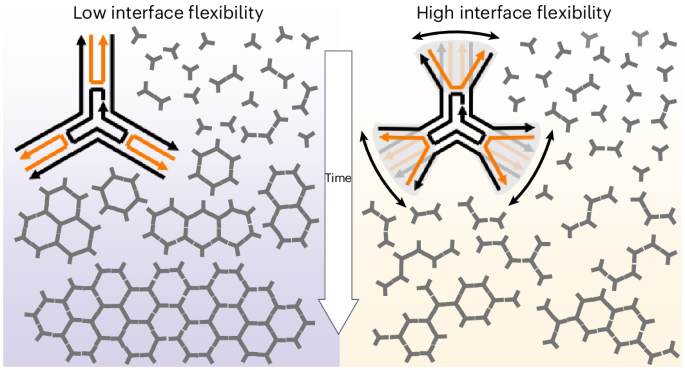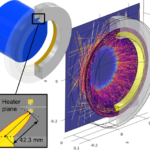2025-02-14 スイス連邦工科大学ローザンヌ校 (EPFL)
<関連情報>
- https://actu.epfl.ch/news/scientists-discover-mechanism-driving-molecular–2/
- https://www.nature.com/articles/s41557-025-01741-y
界面の柔軟性が超分子ネットワークの核生成と成長を制御する Interface flexibility controls the nucleation and growth of supramolecular networks
Vincenzo Caroprese,Cem Tekin,Veronika Cencen,Majid Mosayebi,Navid Asmari,Tanniemola B. Liverpool,Derek N. Woolfson,Georg E. Fantner & Maartje M. C. Bastings
Nature Chemistry Published:13 February 2025
DOI:https://doi.org/10.1038/s41557-025-01741-y

Abstract
Supramolecular networks are abundantly present in nature and, like crystalline materials, often develop from an initial nucleation site, followed by growth based on directional interactions between components. Traditionally, the binding strength and directionality of interactions is thought to dictate nucleation and crystal growth, whereas structural flexibility favours defects. Usually, macromonomers present multiple binding sites with relative intramolecular flexibility, but the effects of such flexibility on regulating network formation have been given little attention. Here we introduce the concept of ‘interface flexibility’ and demonstrate its critical importance in the nucleation and growth of supramolecular networks. As a model system, we use trisymmetric DNA-based macromonomers, which organize into hexagonal networks through weak π–π interactions at their tips. The directional nature and low spatial tolerance of π–π interactions mean that small shifts in orientation have a large effect on effective valency. We show that too much interface flexibility disrupts network formation, regardless of affinity. Tuning the interface flexibility greatly expands the available design space for synthetic supramolecular materials.



